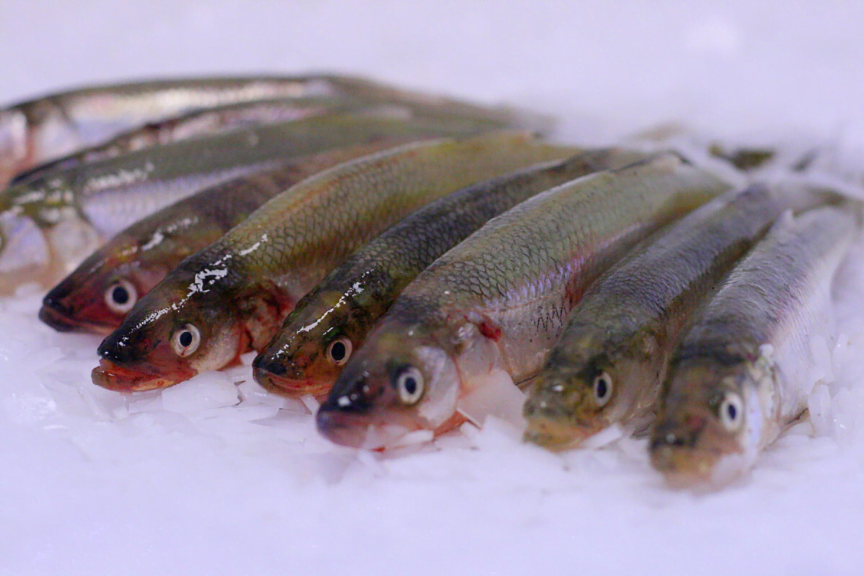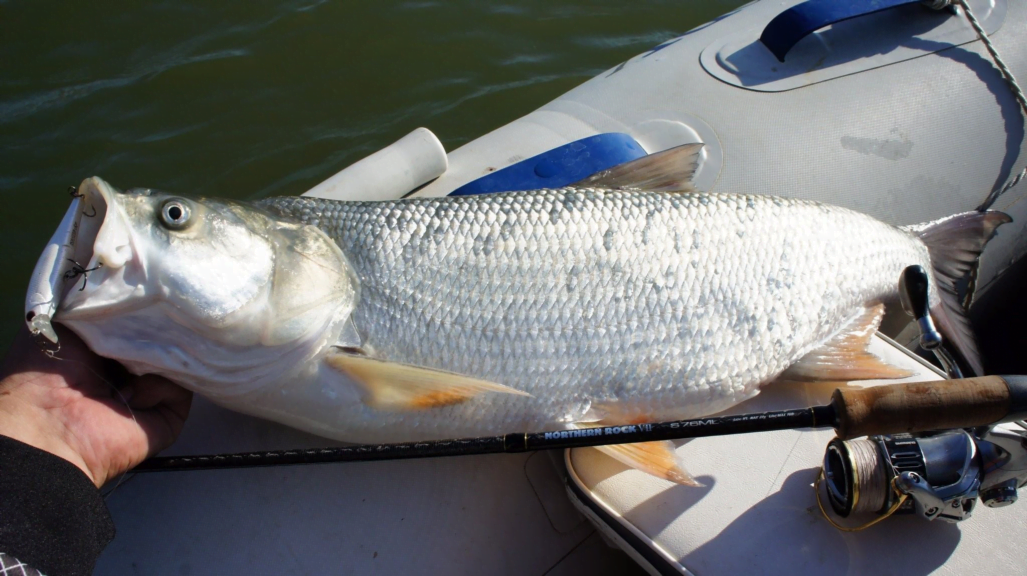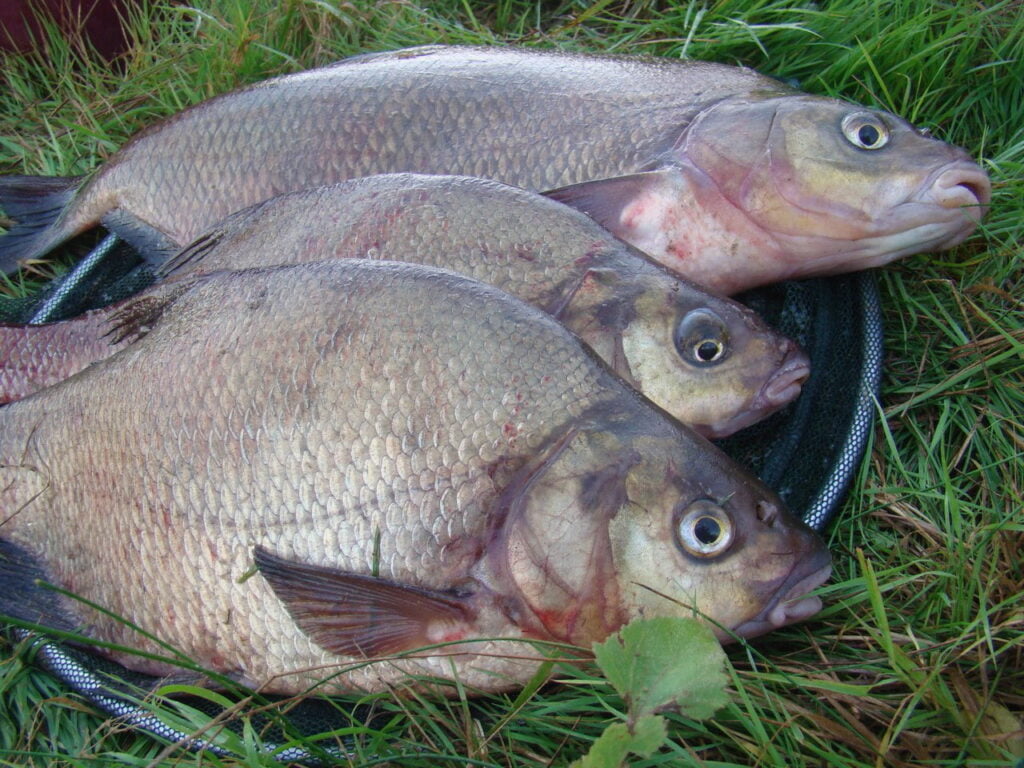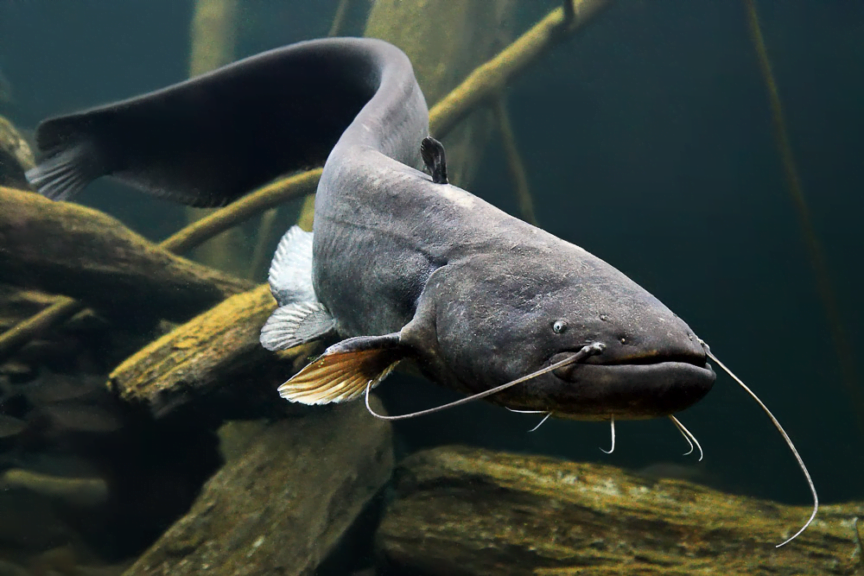Karosas (lot. Carassius gentis) – gėlavandenė karpinių (Cyprinidae) šeimos žuvis, mėgstanti stovinčius vandenis. Šis tvenkinių gyventojas garsėja ne tik savo ištverme ir gebėjimu išgyventi sudėtingomis sąlygomis, bet ir plačiu paplitimu. Karosas yra vidutinio dydžio karpinė žuvis, artimas karpio giminaitis, pasižymintis savitu grožiu bei įdomiu gyvenimo ciklu. Šiame straipsnyje sužinosite, kas yra karosas, kodėl ši žuvis įdomi tiek mokslininkams, tiek žvejams, ir kaip ją atpažinti, gaudyti bei paruošti virtuvėje. Taip pat aptarsime karosų rūšis, paplitimą, mitybą, nerštą ir pateiksime praktinių patarimų, praversiančių tiek žvejybos entuziastams, tiek kulinarams.
Karoso išvaizda ir būdingos savybės
Karosas – aukšto kūno ir plokščių šonų žuvis. Jo spalva kinta nuo auksinės iki sidabrinės, priklausomai nuo rūšies ir gyvenamosios aplinkos.
Karosui būdingas aukštas, iš šonų plokščias kūnas. Jo žvynai – dideli ir glotnūs, o pelekai – ilgi, ypač nugarinis pelekas, kuris siekia uodegą. Paprastasis (auksinis) karosas paprastai turi žalsvai rusvą nugarą ir vario ar aukso atspalvio šonus. Sidabrinio karoso nugara pilkšvesnė, o šonai šviesesni, sidabriniai. Karosai neturi ūsų (skirtingai nuo karpio), todėl juos nesunkiai atskirsite iš galvos sandaros. Svarbi karosų savybė – atsparumas: jie pakelia deguonies trūkumą vandenyje ir ištveria didelius temperatūros svyravimus. Dėl šio atsparumo karosai gali gyventi uždumblėjusiuose tvenkiniuose, kur kitos žuvys neišgyventų. Pastebėta ir įdomi karosų prisitaikymo forma – jei telkinyje gausu plėšrių žuvų, karosai gali išauginti aukštesnį ir storesnį kūną, kuris plėšrūnams tampa sunkiau praryjamas. Nors toks „kuprotas“ kūnas padeda apsiginti, manoma, kad jis gali turėti trūkumų – pavyzdžiui, lėtesnį augimą ar silpnesnę imuninę sistemą, palyginti su lieknesniais karosais. Vis dėlto ši prisitaikanti kūno forma – dar vienas įrodymas, koks lankstus ir išradingas yra karosas kaip rūšis.
Karoso rūšys ir porūšiai
Karosų gentį (Carassius) sudaro kelios rūšys ir porūšiai, kuriuos verta žinoti. Pagrindinės yra dvi: paprastasis, arba auksinis, karosas ir sidabrinis karosas. Taip pat egzistuoja dekoratyvinis porūšis – auksinė žuvelė, išvesta iš kinų sidabrinio karoso. Žemiau pateikiame lentelę su svarbiausiomis karoso rūšimis ir jų ypatybėmis:
| Karoso rūšis | Mokslinis pavadinimas | Dydis (ilgis, svoris) | Spalva ir ypatybės |
|---|---|---|---|
| Paprastasis karosas (auksinis karosas) | Carassius carassius | iki ~50 cm; svoris dažn. 0,5–2 kg (retai iki ~4 kg) | Nugara žalsvai rusva, šonai auksiniai; lėčiau augantis, mūsų vandenų senbuvis. |
| Sidabrinis karosas (invazinė rūšis) | Carassius auratus gibelio | iki ~40–45 cm; svoris dažn. iki 1–2 kg (gali siekti ~3 kg) | Nugara pilkšva, šonai sidabriniai; greičiau auga (gynogenezė). |
| Auksinė žuvelė (dekoratyvinė) | Carassius auratus auratus | kinta (dekoratyvinės veislės dažn. 10–20 cm) | Įvairių ryškių spalvų dekoratyviniai karosai, išvesti Kinijoje iš sidabrinio karoso porūšio; auginami akvariumuose ir tvenkiniuose. |
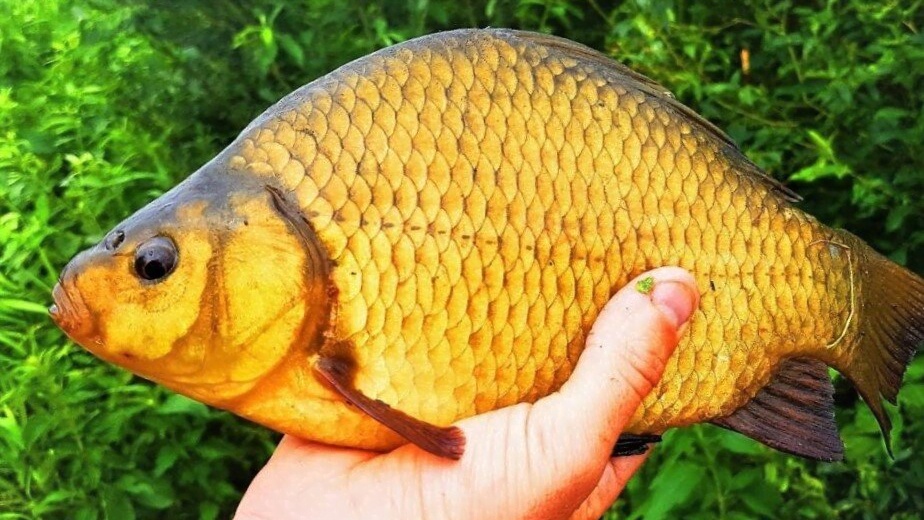
Paprastasis karosas dar vadinamas auksiniu dėl savo atspalvio. Tai mūsų vandenų vietinė rūšis, nuo seno gyvenanti Lietuvos ežeruose ir upėse. Sidabrinis karosas – atvykėlis iš Azijos (Amūro upės baseino), XX a. viduryje introdukuotas Lietuvoje. Ši sidabrinė karpinė žuvis dabar labai paplitusi ir dažnai net išstumia auksinį karosą iš jo buveinių. Sidabriniai karosai pasižymi unikaliu dauginimosi būdu – gynogeneze, kai populiacijoje yra vien patelės, o ikrus vystytis “užveda” kitų žuvų (pvz., karpių, lynų ar auksinių karosų) spermatozoidai, tačiau palikuonys genetinę informaciją paveldi tik iš motinos. Auksinės žuvelės – tai selekcinis stebuklas: iš Kinijos sidabrinių karosų per šimtmečius išveistos dekoratyvinės veislės, pasižyminčios ryškiai raudona, oranžine, balta ar dėmėta spalva. Nors auksinės žuvelės dažniausiai gyvena akvariumuose, jos – artimos karosų giminaitės ir įdomus pavyzdys, kaip žmogus gali pakeisti laukinę žuvį.
Iš kur kilęs karosas ir kur gyvena šiandien
Karosai yra kilę iš Eurazijos. Auksinis (paprastasis) karosas natūraliai paplitęs beveik visoje Europoje ir Vakarų Azijoje – nuo Britų salų ir Skandinavijos šiaurėje iki Juodosios jūros regiono pietuose, nuo Vakarų Europos iki Sibiro (Lenos upės) rytuose. Tai rodo, kad karosas – plačiai paplitusi rūšis, prisitaikiusi prie įvairių klimato zonų. Sidabrinio karoso tėvynė – Tolimieji Rytai (Kinija, Sibiro Amūro baseinas). 18 a. pabaigoje ši rūšis pradėta auginti Europoje dekoratyviniais tikslais, o XX a. viduryje (apie 1951–1952 m.) aktyviai introdukuota į daugelį šalių, taip pat ir Lietuvą. Šiandien Lietuvoje galima sutikti abi rūšis, tačiau sidabrinis karosas tapo kur kas dažnesnis – jis paplitęs ežeruose, tvenkiniuose, lėtos tėkmės upėse visoje šalyje. Tuo tarpu paprastųjų karosų populiacijos sumažėjusios, nes atvežtieji sidabriniai agresyviai konkuruoja dėl maisto ir buveinių. Vis dėlto atokiuose užpelkėjusiuose baluose ir senvagėse dar galima rasti grynakraujų auksinių karosų – mažesnių, tamsesnių, prisitaikiusių gyventi ten, kur kitos žuvys neišgyvena.
Globaliu mastu karosas (plačiąja prasme) paplitęs nuo Europos iki Tolimųjų Rytų. Sidabrinis karosas dėl žmogaus veiklos šiandien aptinkamas ne tik Azijoje ar Europoje, bet net ir Šiaurės Amerikoje – ten laikomas invazine rūšimi. Dėl savo atsparumo jis lengvai prigyja naujuose vandens telkiniuose. Įdomu, kad Anglijoje paprastasis karosas laikomas vietine rūšimi, o ne žmogaus įvestu – tyrimai parodė, kad britų salose karosai gyveno natūraliai nuo ledynmečio laikų. Taigi, karosas – tikras eurazietis, kurio sėkmės paslaptis slypi gebėjime prisitaikyti prie pačių įvairiausių sąlygų.
Kokiuose vandenyse gyvena karosas
Karosai labiausiai mėgsta ramius, seklius ir gerai įšylančius vandens telkinius. Dažniausios jų gyvenamos vietos – uždumblėję ežerėliai, tvenkiniai, kūdros, pelkėti užutekiai bei lėtos tėkmės upių atšakos. Ten gausu augalijos, dumblo ir mažai plėšrūnų – tobula buveinė karosui. Tvenkinių gyventojas karosas puikiai jaučiasi vandenyje, kuriame vasarą vanduo įšyla, o dugne susikaupia storas dumblo sluoksnis. Toks dugnas jam tarnauja kaip slėptuvė ir „lova“ žiemojant. Įprastai žiemą karosai įsirausia į minkštą dumblą (apie 0,5 m gylyje) ir ten, tarsi šiltuose pataluose, praleidžia šaltąjį sezoną beveik anabiozės būsenoje. Šis neįtikėtinas prisitaikymas leidžia jiems išgyventi net užšalusiuose ar deguonies stokojančiuose vandens telkiniuose. Yra duomenų, kad karosai gali ištverti keletą mėnesių beveik be deguonies, lėtindami medžiagų apykaitą ir net gamindami etilo alkoholį, kurį išskiria per žiaunas – taip jie išvengia mirtinai pavojingo pieno rūgšties kaupimosi organizme. Tai unikalus bruožas tarp stuburinių žuvų.
Nors karosai mėgsta stovintį vandenį, sidabrinis karosas, išplitęs Lietuvoje, prisitaikė gyventi ir upėse. Jį galima rasti net Nemuno deltose ar lėtesniuose intakuose. Tiesa, stiprios srovės šios žuvys vengia – mieliau laikosi ramiose upių įlankose, kur mažiau sraunumo. Abi rūšys – sėslūs gyventojai: dažniausiai jie visą gyvenimą praleidžia tame pačiame ežere ar kūdroje, toli nemigruoja. Jeigu telkinys išdžiūsta ar kitaip sunyksta, karosai gali žūti vietoje, tačiau jų išlikimo strategija – gausus dauginimasis ir atsparumas – užtikrina, kad aplinkiniuose vandens telkiniuose vis tiek visada rasime karosų.
Apibendrinant, karosui tinkamiausia aplinka yra seklus vanduo su gausiu dumblo ir augalų sluoksniu. Ten jis randa ir maisto, ir prieglobstį, ir tinkamas sąlygas neršti. Jei turite sodybos prūdelį, labai tikėtina, kad jame anksčiau ar vėliau apsigyvens karosas – kartais pakanka, kad paukščiai ar kiti gyvūnai atneštų ikrų, ir ši atspari žuvelė atras kelią net į izoliuotus vandens telkinius.
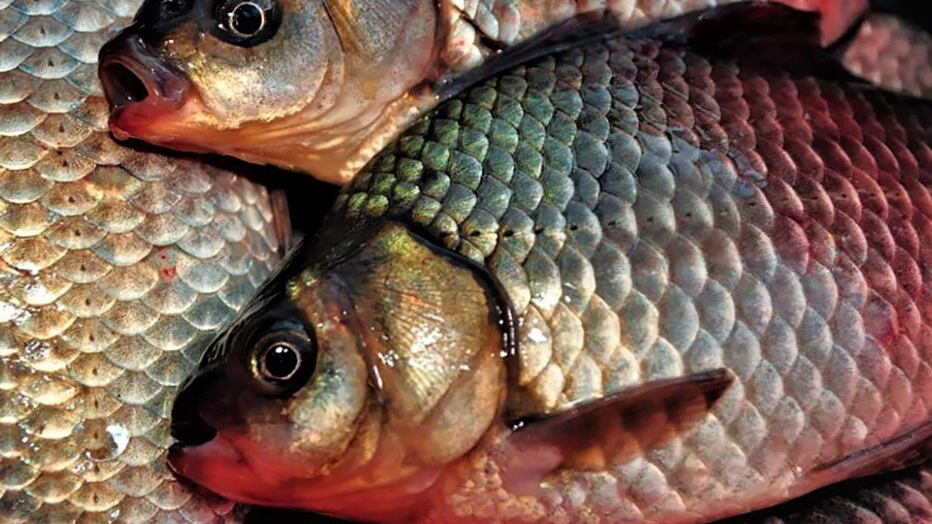
Kuo minta karosas
Karosas yra visaėdis dugno gyventojas. Jo racioną sudaro tiek augalinis, tiek gyvūninis maistas. Dugno dumbliai, maži bestuburiai, zooplanktonas – visa tai karosui tinkamas maistas. Paprastasis karosas minta dumbliais, detritu (yrančiomis organinėmis medžiagomis), vabzdžių lervomis (pvz., uodo trūklio), mažomis kirmėlėmis, dėlėmis, moliuskais. Sidabrinis karosas labai panašus – jo meniu taip pat sudaro įvairūs smulkūs dugno organizmai, vandenyje gyvenantys vabzdžiai, smulkūs vėžiagyviai, planktonas ir augalinės dalelės. Karoso burnoje nėra aštrių dantų – vietoje jų giliau gerklėje turi ryklės dantis, kuriuos naudoja maistui trinti. Dėl to karosai gali traiškyti sraigių geldeles ar kietesnius augalus.
Įdomu tai, kad karosai dažnai rausiasi dugne ieškodami maisto. Jei matote seklioje kūdroje kilančius dumblo debesėlius – gali būti, kad ten knisasi karosas. Tvenkiniuose karosai atlieka ir sanitaro vaidmenį: jie susiurbia maisto likučius, suėda uodų lervas, prisideda prie vandens ekosistemos švarinimo. Žinoma, dėl rausimosi jie sudrumsčia vandenį – jei tvenkinyje daug karosų, vanduo gali būti nuolat drumstas.
Vasarą, šiltame vandenyje, karosai ėda itin aktyviai – kaupia riebalus žiemai. Šaltuoju sezonu jų medžiagų apykaita sulėtėja, maisto beveik nebeieško. Kaip minėta, žiemodami dumble, jie gali išvis nesimaitinti kelias savaites ar mėnesius. Tai svarbu žinoti žvejams – žiemą karoso sudominti masalu beveik neįmanoma, nebent pasitaiko išskirtinai šiltesnių žiemų, kai jie trumpam suaktyvėja.
Apibendrinant, karosas ryja viską, ką randa savo aplinkoje: nuo smulkiausių gyvių iki augalinių atliekų. Dėl šios neišrankios mitybos jis ir gali išgyventi ten, kur kitos plėšrios ar lepesnės žuvys badautų. Tai dar viena paslaptis, kodėl karosas toks gyvybingas ir lengvai plinta.
Kaip karosas neršia
Karosų dauginimasis – įdomus ir produktyvus procesas. Karosai subręsta gana anksti: auksiniai paprastai 3–4 metų amžiaus (apie 9–10 cm ilgio), o sidabriniai dar greičiau – jau 2–3 metų (12 cm). Neršto metas mūsų kraštuose prasideda vėlą pavasarį – maždaug gegužės viduryje, kai vanduo telkiniuose sušyla iki ~14 °C. Karosai neršia porcijomis, tai reiškia, kad patelė ne iš karto išneršia visus ikrus, o padalija į kelias dalis. Nerštas tęsiasi beveik visą vasarą – nuo gegužės pabaigos per birželį iki liepos, palankiausiomis sąlygomis ikrai gali būti brandinami ir rugpjūčio pradžioje. Karosų ikrai smulkūs, lipnūs – patelės juos beria ant povandeninių augalų, žolių, šaknų seklumose. Viena patelė gali padėti milžinišką kiekį ikrų: paprastasis karosas – iki ~300 tūkstančių, sidabrinis karosas – nuo ~100 iki 350 tūkstančių. Toks didelis vislumas kompensuoja grėsmes – juk daugybę ikriukų suėda kitos žuvys, varlės, vabzdžiai, nemažai mailiaus vėliau taip pat žūsta.
Karosų neršiančios grupės dažniausiai būna mišrios: keli patinai intensyviai vaikosi vieną patelę, kol ši beria ikrus. Vandens paviršiuje tada galima pamatyti šėlstančius purslus, girdėti net šiurenimą. Patelės kūnas neršto metu patinsta nuo ikrų, o patinai neršto periodu gali įgauti šiurkštumo – pasidengia mažais baltais gumbeliais (neršto bėrimu) ant galvos ir pelekų, tampa tarsi šiurkštūs liečiant. Tai būdinga daugeliui karpinių žuvų per veisimosi sezoną.
Įdomus faktas: kaip minėta ankstesniuose skyriuose, dalis sidabrinių karosų populiacijų yra sudarytos vien iš patelių. Šios patelės neršia kartu su kitomis žuvimis – pavyzdžiui, auksiniais karosais arba karpiais – ir panaudoja patinų spermą savo ikrams stimuliuoti. Tačiau spermatozoidai kiaušinių neapvaisina genetine prasme – palikuonys vystosi tik iš motinos genetinės medžiagos. Tai gynogenezė, leidžianti išlaikyti vien moterišką liniją nesimaišant su kitomis rūšimis. Toks reiškinys gamtoje retas ir pabrėžia, kokie unikalūs gali būti karoso dauginimosi būdai. Vis dėlto ten, kur yra normalios (dvilytės) sidabrinių karosų populiacijos, žuvys paprastai būna stambesnės ir gyvybingesnės.
Po neršto, priklausomai nuo vandens temperatūros, karosų mailius išsirita per kelias dienas ar porą savaičių. Maži karosiukai iš pradžių maitinasi smulkiausiu planktonu, infuzorijomis. Augdami jie greitai prisitaiko ėsti tai, ką ėda suaugę – tampa visaėdžiais. Jau pirmaisiais gyvenimo metais karosiukai gali užaugti iki 5–8 cm (ypač sidabriniai, kurie auga sparčiau). Auksinių karosų jaunikliai auga lėčiau, dažnai telkiniuose susidaro daugybė mažų nykštukinių karosiukų, kurie dėl maisto trūkumo neužauga dideli. Tai gali būti problema per mažiems tvenkiniams – perteklius smulkių karosų reiškia, kad nė vienas nepasiekia įspūdingo dydžio.
Karosas žvejyboje: kada ir kaip gaudyti
Karosas – mėgstamas žūklės objektas, ypač mėgėjų žvejyboje. Nors versline prasme ši žuvis nėra tokia vertinga kaip karpiai ar lydekos, tačiau gaudyti karosus – smagus užsiėmimas. Pirmiausia todėl, kad juos galima rasti beveik visur, kur tik yra mažesnis vandens telkinys, antra – didesnis karosas tampa tikru laimikiu, nes stambesni egzemplioriai gudrūs ir atsargūs.
Kada geriausia kimba karosai? Šilčiausiu metų laiku – pavasario pabaigoje ir vasarą, kai karosai aktyviai maitinasi. Geriausias kibimas dažnai būna ankstyvą rytą (nuo aušros iki ~11 val.) ir vėlyvą popietę prieš saulėlydį. Dienos metu per patį karštį karosai neretai tingiai laikosi pavėsyje ar gelmėje, o vakarop vėl suaktyvėja ieškodami maisto. Žinoma, orai ir vieta daro įtaką – apsiniaukusią dieną gali kibti ir vidury dienos, o per kaitrą geriau laukti vakaro. Rudenį karosų kibimas silpsta, vandeniui atvėsus jie ruošiasi žiemoti. Žieminė karosų žūklė apskritai yra iššūkis – tradiciškai manyta, kad žiemą karoso pagauti neįmanoma, nes jis giliai įminga dumble. Tačiau pastaruoju metu pasitaiko atvejų, kai švelnesnėmis žiemomis žvejai pagauna karosų net ir pro eketę (dažniau – sidabrinių karosų). Visgi tai veikiau išimtis – dažnas žvejys karoso po ledu neieško.
Kaip gaudyti karosą?
Populiariausi būdai – plūdinė meškerė arba lengva dugninė meškerė (t. y. šėryklėlė). Karosai mėgsta ramias vietas, tad žvejojant plūdine verta masalą mesti šalia vandens lelijų, į nendrių properšas, prie skenduolių medžių. Masalai tinka įvairūs: pavasarį ir vasaros pradžioje geriau gyvūniniai masalai – sliekai, uodo trūklio lervos, musės lervos. Karosui patrauklus kvapas ir judesys, tad mažas rausvas sliekelis dažnai būna tikras skanumynas. Vasarai įsibėgėjus, kai vanduo šiltas, karosai noriai ragauja ir augalinius masalus: virtą perlinių kruopų ar kviečių grūdą, kukurūzą, tešlą, duonos minkštimą. Patyrę žvejai neretai sumaišo tešlą su kvapniais priedais – vanile, medumi ar net trintu česnaku – karosas smalsus kvapams, ir netikėti aromatai gali jį privilioti. Jaukinimas – dar vienas sėkmės faktorius: įmetus į vietą saujelę kvapnaus jauko (pvz., malto džiūvėsėlio su sėklomis ar specialaus karosų jauko su marcipano aromatu, kuris, beje, laikomas vienu mėgstamiausių karosų kvapų), žuvys susiburia ir kibimas būna intensyvesnis.
Žvejojant plūdine meškere, derėtų naudoti ploną valą ir nedidelį kabliuką – karosai turi mažą burną ir dažnai krapšto masalą atsargiai. Plūdę geriau subalansuoti jautriai, kad pastebėtumėte net švelnų timptelėjimą, mat karosas kimba atsargiai: kartais plūdė vos sudreba ar pamažu ima svirti šonan. Pastebėję kibimą, neskubėkite staigiai pakirsti – karosas mėgsta „degustuoti“ masalą, todėl palaukite akimirką, kol plūdė ryžtingiau panyra. Dugninė meškerė su šėryklėle duoda gerų rezultatų, ypač jei telkinio karosai didesni. Į šėryklėlę dedamas jaukas (su smulkiais masalo gabaliukais), o ant kabliuko veriamas slieko galas ar kitas jau minėtas masalas. Karosas dažnai tūno netoli dugno, tad toks masalo pateikimo būdas jam patrauklus.
Praktinis patarimas: jei žvejojate mažame tvenkinyje karosus ir kimba vien mažyliai, gali padėti masalo didinimas. Užuot kabinę mažą slieką, užkabinkite didelį slieką ar kelias musės lervas vienu metu – smulkūs karosiukai tokio masalo gal ir neįveiks, o štai stambesnis egzempliorius susidomės. Taip pat verta žvejoti vakarėjant – sutemos karosams signalizuoja, kad laikas maitintis pakrantėse, ir tuo metu galima sulaukti didžiausių laimikių.

Karosas virtuvėje: nuo keptuvės iki žuvienės
Karosas nuo seno atsiduria ir ant pietų stalo. Karoso mėsa skani, švelni, tačiau šią žuvį lydi viena bėda – smulkūs kauliukai (ašakos). Vis dėlto patyrę šeimininkai žino, kaip paruošti karosą, kad kaulai netrukdytų mėgautis patiekalu.
Vienas populiariausių būdų – keptas karosas keptuvėje. Dažniausiai kepami nedideli (apie delno dydžio) karosiukai. Jie nuvalomi (nugramdomi žvynai, išdarinėjami viduriai), tuomet svarbiausias triukas: abiejose žuvies pusėse kas ~5 mm daromi negilūs įpjovimai peiliu, per visą šoną, beveik iki pat stuburo (tarsi supjaustant filė gabaliukais). Šie įpjovimai perriečia daugelį smulkių kauliukų. Tada karosas padruskinamas, galima pabarstyti pipirais, apvolioti miltuose ar džiūvėsėliuose ir kepti. Karštame aliejuje mažyčiai kauliukai iškepa ir tampa trapūs – gerai iškeptas traškus karosas valgomas beveik visas, kaip saulėgrąža su lukštu, nes plonyčiai kauliukai nė nejaučiami. Yra net posakis, kad tinkamai paruoštas karosas – “suvalgytas su visais kaulais”. Kepant galima įdaryti žuvį žalumynais, griežinėliu citrinos ar aptepti grietine – tai suteiks papildomo skonio ir sultingumo.
Be kepimo, karosai tinka ir žuvienei ar troškiniams. Kadangi karoso mėsa kiek salstelėjusi, ji puikiai dera sriuboje su rūgščiais priedais. Pavyzdžiui, kaimyninėje Lenkijoje tradicinis patiekalas – karosai grietinėje (lenk. karasie w śmietanie), kai apkepintos žuvys troškinamos orkaitėje grietinės padaže su prieskoniais. Taip troškinant, ašakos suminkštėja, o grietinė suteikia švelnų skonį. Lietuvoje šeimininkės taip pat neretai marinuoja ar troškina karosus su daržovėmis, kepa orkaitėje su grietine ar pomidorų padaže. Konservuoti karosai pomidorų padaže – nostalgiškas patiekalas, menantis sovietmetį, kai parduotuvėse būdavo pirkti uždaryti stiklainiuose mažučiai karosiukai.
Reikia pripažinti, kad dideli (pvz., virš 1 kg) karosai kulinariškai vertinami mažiau, nes kuo žuvis stambesnė, tuo didesni kaulai. Tokius milžinus geriau paleisti atgal į telkinį arba panaudoti žuvienei. Maži karosiukai (100–300 g) – patys skaniausi kepti.
Praktinis patarimas: prieš kepant, karosus galima pamarinuoti citrinos sultyse ar acte ~30 minučių. Rūgštis iš dalies ištirpdo kauliukus ir jie tampa dar mažiau juntami. Be to, žuvis prisigeria malonaus skonio. Kepant orkaitėje, rekomenduojama karosus įpjauti, įtrinti prieskoniais, į pilvą įdėti svogūno, morkos griežinėlį – taip iškepę jie bus aromatingesni.
Nors karosas – ne prabangos patiekalas, teisingai paruoštas jis gali nustebinti. Iš paprastos „kūdrų žuvelės“ virtuvėje gimsta traški gardi kepsnelė ar šildanti naminė žuvienė. Svarbu nebijoti improvizuoti su prieskoniais ir nepamiršti minėtų gudrybių dėl ašakų. Tuomet karosas tikrai nustebins savo skoniu net skeptiškiausius ragautojus.
Įdomūs faktai apie karosą
- Išgyvenimo čempionas: Karosas neretai vadinamas atspariausia žuvimi. Jis gali išbūti vandenyje, kuriame deguonies beveik nėra, ir net ištverti visiškai užšalusį telkinį. Žiemą įsirausęs dumble karosas pereina į savotišką žiemos miegą – jo širdies ritmas sulėtėja, kvėpavimas minimalus. Tyrimai rodo, kad karosas tokiomis sąlygomis energiją gauna anaerobiniu būdu, o kaip šalutinį produktą išskiria alkoholį. Vėliau alkoholis pasišalina per žiaunas į vandenį. Šis mechanizmas leidžia žuviai neapakti ir nežūti net visiškoje anoksijoje (be deguonies). Panašų gebėjimą turi ir auksinė žuvelė – artima karoso giminaitė.
- Ilgaamžis, bet ne rekordininkas: Karoso gyvenimo trukmė gamtoje siekia apie 10–15 metų. Optimaliomis sąlygomis kai kurie auksiniai karosai išgyvena ir ilgiau – užregistruota atvejų, kai žuvis gyveno per 20 metų. Tačiau dekoratyvinės auksinės žuvelės akvariumuose gali gyventi dar ilgiau – iki 30–40 metų, jei gerai prižiūrimos. Visgi palyginus su kitais karpiniais (karpiais, kurie gali gyventi 40+ metų), karoso amžius vidutinis. Įdomu, kad pirmaisiais gyvenimo metais karosas auga lėtai, bet vėliau, jei sąlygos geros, augimas gali tęstis visą gyvenimą – labai sena žuvis gali būti nemenkų matmenų.
- Hibridai: Karosai lengvai kryžminasi su kitomis karpinėmis žuvimis. Yra žinomi karoso ir karpio hibridai, karoso ir lyno, net karoso ir raudės (kuojos) hibridai. Kai kurie hibridai pasižymi heteroze – būna didesni, tvirtesni už tėvines formas. Visgi dažnai tokie mišrūnai būna nevaisingi. Žvejai kartais sugavę įtartinai atrodantį „karpį“ be ūsų ar labai stambų karosą svarsto, ar tai ne hibridas. Mokslininkai yra laboratorijoje sukūrę karoso ir auksinės žuvelės hibridų – deja, dauguma jų nevaisingi ir trumpaamžiai.
- Rekordai: Nors karosai dažniausiai užauga iki 1–2 kg, pasitaiko tikrų milžinų. Didžiausias pasaulyje karosas galimai pagautas Vengrijoje, svėrė apie 5 kg – tiesa, manoma, kad tai galėjo būti karoso ir kitų karpinių hibridas. Britų žvejai yra užfiksavę rekordinį grynakraujį karosą – 2,7 kg svorio. Lietuvoje oficialūs karosų rekordai nėra kruopščiai registruojami, bet žvejai pasakoja apie 1,5–2 kg sveriančius laimikius mūsų ežeruose. Dažniau pasitaiko rekordininkai sidabriniai karosai, nes jie užauga didesni – buvo pagautas ~3 kg sidabrinis karosas Kauno mariose (tokį laimikį tik patvirtinti sunku, nes karosas ne visada skiriamas nuo karpio hibridų).
- Kulinarinės tradicijos: Karosai minimi ir kultūroje bei literatūroje. Rusų pasakoje „Auksinė žuvelė“ stebuklinga norus pildanti žuvis iš tiesų yra auksinis karosas. Lenkų virtuvėje karosai grietinės padaže – senovinis bajoriškas patiekalas, kadaise buvo patiekiamas dvaruose kaip delikatesas. Lietuvoje karosai neturi tokio išskirtinio statuso, bet kaimo vietovėse jie gelbėdavo šeimininkes – pagavus keliolika karosiukų, jau gali išvirti sočią sriubą šeimai. Sovietmečiu karosai buvo vieni lengviausiai prieinamų šviežių karpinių žuvų – parduotuvėse kainavo nebrangiai, todėl tapo „darbo žmonių žuvimi“, kepama kasdieniniuose pietuose.
- Ekosistemos inžinierius: Mokslininkai pastebėjo, kad telkiniuose, kur gausu karosų, pasikeičia ekosistema. Karosai rausdami dumblą gali sumažinti vandens augalų, nes išjudina jų šaknis, suskaldo povandenines pievas. Taip pat jie konkuruoja su kitomis taikiomis žuvimis (lynai, karšiai, raudės) – išstelbia jas iš pačių uždumblėjusių vietų. Dėl to kai kur karosai vertinami kaip nepageidaujami – pavyzdžiui, saugomuose mažo vandens telkiniuose gali išstumti retas rūšis. Visgi teigiama pusė – karosai valo vandenį nuo organinių atliekų ir reguliuoja uodų populiacijas ėsdami jų lervas, tad gali sumažinti vabzdžių plitimą aplinkiniuose plotuose.
Išvados ir praktiniai patarimai
Karosas – unikali ir vertinga mūsų vandenų žuvis, galinti gyventi ten, kur kitos neišgyventų. Susipažinę su jo išvaizda, rūšimis, paplitimu bei įpročiais, galime geriau suprasti, kaip išnaudoti šią žuvį savo naudai ir malonumui. Štai keletas baigiamųjų patarimų ir akcentų:
- Žvejojant karosus: rinkitės šiltojo sezono rytus arba vakarus – tuomet karosai aktyviausi. Naudokite smulkų masalą (sliekus, lervas, kukurūzus) ir jaukinkite kvapniu jauku, kad pritrauktumėte didesnių egzempliorių. Būkite kantrūs – karosas kimba atsargiai, todėl sulaukę plūdės virptelėjimo neskubėkite, leiskite žuviai praryti masalą. Žiemą geriau karosus palikti ramybėje – tegul jie miega dumble iki pavasario atšilimo.
- Ruošiant tvenkinį: jei planuojate užveisti karosų savo kūdroje, nepamirškite, kad jie labai vislūs. Per kelerius metus galite turėti perteklinę populiaciją smulkių karosiukų. Rekomenduojama retkarčiais sužvejoti dalį žuvų arba įleisti keletą plėšrių žuvų (lydeką, ešerį), kad populiacija būtų kontroliuojama. Taip pat pravartu kūdroje turėti bent pusmetrį dumblo – žiemojimui. Karosai prastai jausis visiškai išvalytu dugnu, jiems reikia kur įsirausti.
- Virtuvės gudrybės: norint mėgautis kepto karoso patiekalu, svarbu tinkamai paruošti žuvį. Būtinai išpjaustykite šonus, kad neliktų juntamų ašakų, arba pamarinuokite. Mažus karosiukus kepkite kol apskrus – tuomet galėsite juos valgyti su visais smulkiais kauliukais. Žuvienei karosą naudokite kaip bazę sultiniui – jo salstelėjusi mėsa suteiks puikų skonį, tik išrinkite didesnius kaulus prieš patiekiant. Nepamirškite drąsiai naudoti prieskonių: lauro lapai, pipirai, krapai, petražolės – karosas „draugauja“ su įvairiais skoniais.
- Gamtoje tausokime: karosas – nors ir atspari žuvis, nusipelno pagarbos. Mažuose vandens telkiniuose negaudykite jų per daug – leiskite populiacijai atsikurti. Jei pagaunate didžiulį seną karosą, svarstykite jį paleisti – tokie egzemplioriai retos genetikos ir galbūt motininės patelės, padedančios palaikyti gausą. Ir jokiu būdu neišleiskite akvariuminių auksinių žuvelių ar svetimose vietose pagautų sidabrinių karosų į natūralius vandenis – tai gali sutrikdyti ekosistemų pusiausvyrą.
Apibendrinant, karosas – tai ištverminga, įdomi ir naudinga žuvis, kuria galime džiaugtis tiek gaudydami, tiek ragaudami. Pažinus jo gyvenimo būdą, atsparumo paslaptis ir panaudojimo būdus, ši paprasta „kūdrų žuvelė“ atsiskleidžia visai kitomis spalvomis.

